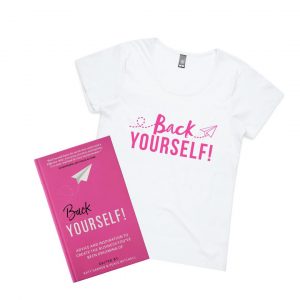So you have published your book and it is a masterpiece. Now you want to get it into the hands of every reader possible. How do you do it?
I have learned so much about selling books these past few months. Since focusing my intention on distribution for 2016, I could now write an entire book on the subject. I will diffuse what I feel is relevant into this blog and hope that you won’t fall asleep.
There are three main ways of selling your book – Print on Demand (POD), eBooks and commercially.
In this article, I will talk about selling your book through POD and next month I will take you through how to sell your book via eBook and commercial distribution.

PRINT ON DEMAND (POD)
POD is a fabulous way to publish your book with minimal financial commitment and risk. If you have a readership already established, then you are one major step ahead and I would suggest a more commercial approach to sales, however POD still will have its place in servicing global customers.
With POD you can have your book available through worldwide distribution. This means that your files will be available to print in printing houses situated in different locations across the globe to service your readers internationally. Customers will be able to source your title through a leading online book store; the order will be processed without you having to do a thing. Alternatively, a customer may order a book through you and you can process it on your account with your printing/distribution company (Ingramspark, createspace, lightning source…) Shipping orders internationally from Australia can be costly, so as it does not cost much to set up files through these distribution channels even if you have printed a bulk amount that resides in your warehouse I would still recommend this option for overseas orders. (However, specialised printed is limited).
Catalogues
It is beneficial to have your book displayed in catalogues alongside other books in your genre, whether this is direct to the customer or to a book buyer. There are many different catalogues out there so find where yours fits and try to have it included.
Schools and Libraries
Libraries buy a lot of books, as do schools. Each state will have its own direct to schools and library representative. In WA, it is Westbooks. The key is to liaise with them and arrange an appointment. Have your book catalogued with the National Library of Australia with an ISBN and have a copy of your book stocked there. James Bennett is also a direct library supplier.
Bookstores
To see your book stocked on a bookshelf is something very special for every author, it is the ultimate dream. You can do it as a self-published author but the instance is quite unlikely unless you have a big following or a distribution company to stock you there. You will need to think and invest like a publishing house to make it happen. It is important to remember that you will be the one taking the financial risk, not the retailer.
Here is an example of how you can make it happen.
Firstly, it is advised that you reduce the cost of your book production to enable to you to make a profit. Working with distributors and bookstores can really eat into your profits which allow the bookstore leverage for a competitive price on your title whilst making money themselves.
Many direct to store distributors are closed to individual accounts, however I do know that Dennis Jones and Associates are open to taking on new books and they are a direct link to Booktopia.
Another option is to research sales representatives who introduce books in your genre to stores. When you approach them it is advised to have a strong pitch as to why they should add your book to their schedule.
Titlepage is a database were bookstores in Australia and New Zealand often go to source titles in specific genres. The key to capitalising here is the have your book categorised correctly. If you are unsure or confused with categorisation, do contact them as they are very happy to help.
Working with bookstores individually is ok in your local area but it takes a lot of time to manage, they do want a high cost of profits often up to 35% or 45 % of RRP. You will also be requested to place them there on consignment and chasing payments in never a nice thing to do. In my experience and with working with authors who have pursued this path, it has always ended up being a costly time consuming venture. This is not saying that with the right focus and contacts you won’t be successful in supplying directly to individual stores. It is my hope that you channel your time and energy on the most productive sales channel for your book.
That sums up my advice and experience with the Print on Demand selling method. Be sure to read the next part of my article where I will advise you on how to sell your books via eBook and commercial distribution.
About our Ausmumpreneur Expert :
 Karen is founder of Serenity Press, a boutique publishing press based in Perth, WA that services clients with their established global distribution link. She is passionate that a publishing experience should be a positive one and likes to manage things at a personal level with her amazing team. 2015 was a big year for Serenity Press and 2016 is going to be amazing. Karen would love for you to join Serenity Press on their journey as they grow from strength to strength bringing amazing books to the world. Everyone has a story within themselves that deserves to be told.
Karen is founder of Serenity Press, a boutique publishing press based in Perth, WA that services clients with their established global distribution link. She is passionate that a publishing experience should be a positive one and likes to manage things at a personal level with her amazing team. 2015 was a big year for Serenity Press and 2016 is going to be amazing. Karen would love for you to join Serenity Press on their journey as they grow from strength to strength bringing amazing books to the world. Everyone has a story within themselves that deserves to be told.



